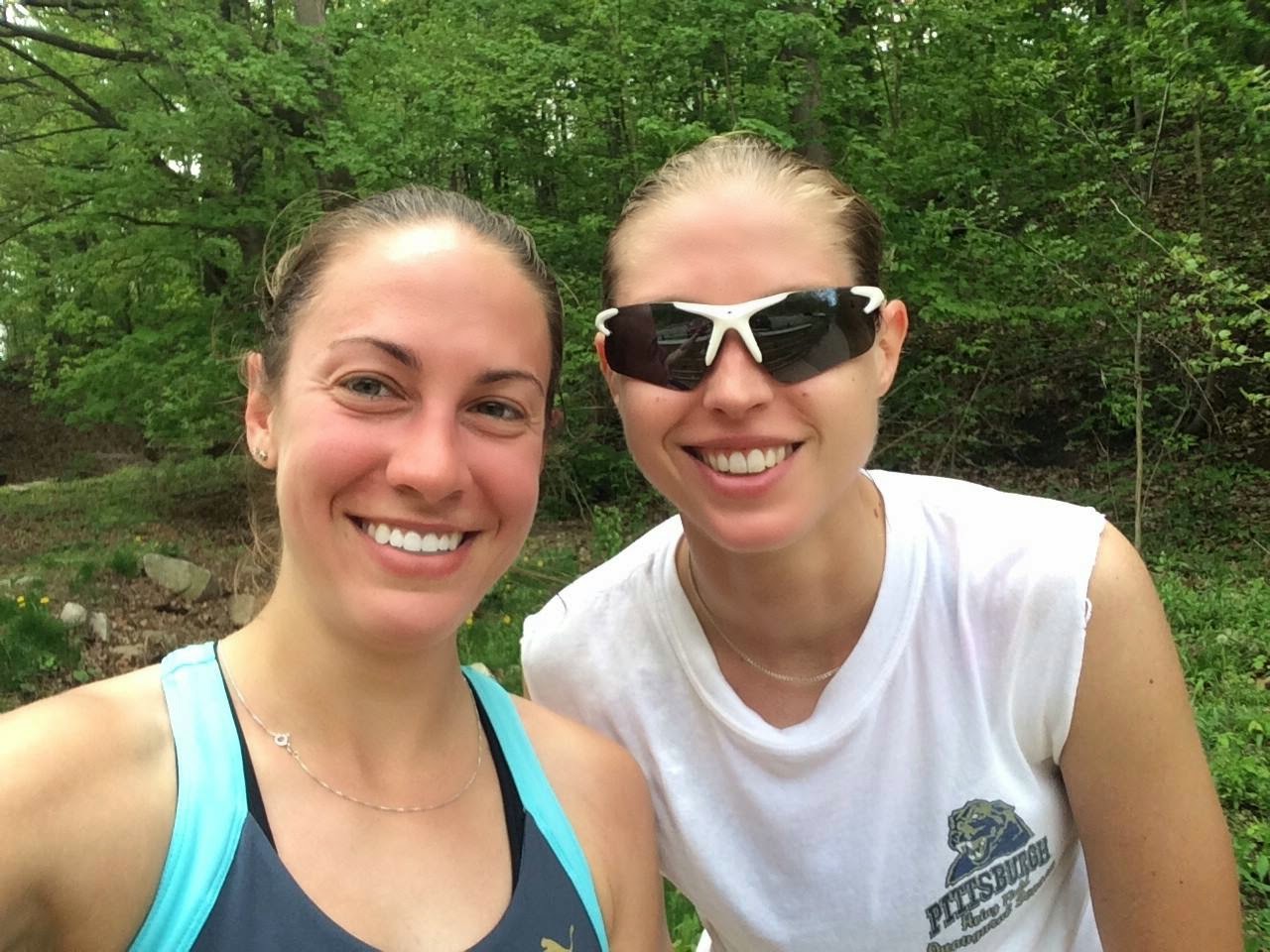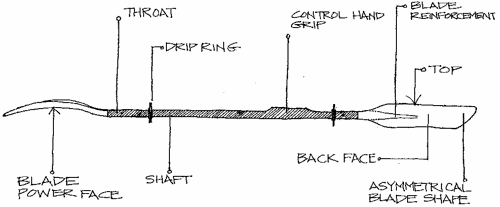Event 1: Run / White
Water Boogie Board
 - We were the second team up the ski slope, right behind Technu to
start the boogie board section. Each team must complete 3 loops around the
white water course to receive credit for this section. Dan completed the first
loop and switched off with Earl. Earl completed the remaining two laps. His
impressive river skills enabled us to slightly pull ahead of Technu. We ran
back down the ski slope to transit onto our bike and begin section two.
- We were the second team up the ski slope, right behind Technu to
start the boogie board section. Each team must complete 3 loops around the
white water course to receive credit for this section. Dan completed the first
loop and switched off with Earl. Earl completed the remaining two laps. His
impressive river skills enabled us to slightly pull ahead of Technu. We ran
back down the ski slope to transit onto our bike and begin section two.
- CP’s 2-5 could be collected in any order in Bike. These points we
located on the mountain bike course Southwest of Wisp resort. We had little
trouble finding these points. After completing this section, we made our way
back to Wisp resort (TA/2) to begin the 3rd event (Paddle / Run
Orienteering).
Event 3: Paddle
 This part of the race offered teams the ability to begin to
strategize. Option 1 was to collect CP’s 7-10 on the paddle before continuing
onto the Orienteering section. The start of the O course was located at CP 10,
located in Deep Creek St. Park, due west of Meadow Mountain Run. Option 2, was
to paddle straight to CP 10, complete the O – course, then proceed to punch
CP’s 8 and 9, which were located on the southernmost end of the lake. Or teams
could skip these points all together and paddle back to the CP 7 which was the
paddle put in, located at Mchenry Marina. Since it was early in
the race, we decided to pursue all available paddle points. There was a strong
headwind during the majority of the paddle. We thought that
once we collected CP 8 and 9 that we could then use the tail wind to our
advantage on our way to the start of the O-course (CP10). This plan did
not work out.
This part of the race offered teams the ability to begin to
strategize. Option 1 was to collect CP’s 7-10 on the paddle before continuing
onto the Orienteering section. The start of the O course was located at CP 10,
located in Deep Creek St. Park, due west of Meadow Mountain Run. Option 2, was
to paddle straight to CP 10, complete the O – course, then proceed to punch
CP’s 8 and 9, which were located on the southernmost end of the lake. Or teams
could skip these points all together and paddle back to the CP 7 which was the
paddle put in, located at Mchenry Marina. Since it was early in
the race, we decided to pursue all available paddle points. There was a strong
headwind during the majority of the paddle. We thought that
once we collected CP 8 and 9 that we could then use the tail wind to our
advantage on our way to the start of the O-course (CP10). This plan did
not work out. The wind died down shortly after we punched CP 9 and paddling towards CP 10. Teams that elected to complete the O-course first had the advantage to collect CP 8 & 9 later since the lake had calmed down. We chalked this up as bad luck, nothing we could have done to predict this. The O-course went rather fast. Our time to collect CP’10-15 took approximately 1:45. GOALS has the fastest time with 1:43. Once we collected all 5 CP’s we headed back to the Mchenry Marina. Dropped the boats and ran back to Wisp Resort to punch CP 16 (TA/3). We left TA/3 shortly after 6:00 PM to begin the next biking section.
Event 4: Bike
 - We traveled Northeast via rt. 219 until we reach Savage River
State Forest. This was located approximately 20k from Wisp Resort. We punched
CP’s 17-20. Based on the location of the points, there were not too many
different options to attack these points. Once we collected all 4 CP’s we
continued East over to New Germany State Park to collect CP’s 21-25. We were
moving rather well until we reached CP25. We had two options: Double back the
way we came and ride an extra ½ hour to CP 26 or bike wack down the hill to a
road that was clearly shown on the map and possibly save a significant amount
of time/distance. We decided to bike wack downhill to the road. When we reached
the road, we found it was completely washed out and un-rideable. This meant, we
faced a 2K hike-a-bike East until we could reach a hard road. This decision cost us a
significant amount of time and energy. Ultimately, we were able to reach CP 26,
which was located southeast of CP 25 in New Germany State park; however were lost
about 1hour due to the slow progress on the bike wack. Once we punched CP 26,
we traveled south to CP 27, which was located at the intersection of the north
end of the Savage River Res. (Big Run Road). We arrived at CP 27 at 4:00 AM,
which was the start of the Score O-course.
- We traveled Northeast via rt. 219 until we reach Savage River
State Forest. This was located approximately 20k from Wisp Resort. We punched
CP’s 17-20. Based on the location of the points, there were not too many
different options to attack these points. Once we collected all 4 CP’s we
continued East over to New Germany State Park to collect CP’s 21-25. We were
moving rather well until we reached CP25. We had two options: Double back the
way we came and ride an extra ½ hour to CP 26 or bike wack down the hill to a
road that was clearly shown on the map and possibly save a significant amount
of time/distance. We decided to bike wack downhill to the road. When we reached
the road, we found it was completely washed out and un-rideable. This meant, we
faced a 2K hike-a-bike East until we could reach a hard road. This decision cost us a
significant amount of time and energy. Ultimately, we were able to reach CP 26,
which was located southeast of CP 25 in New Germany State park; however were lost
about 1hour due to the slow progress on the bike wack. Once we punched CP 26,
we traveled south to CP 27, which was located at the intersection of the north
end of the Savage River Res. (Big Run Road). We arrived at CP 27 at 4:00 AM,
which was the start of the Score O-course.
Event 5: Score O
 - There was a possible of 10 points on this section. This was a very
physically demanding section since all CP’s we located on hill tops that
stretched Northwest along Big Run Road. Points could be collected in any order.
We were able to collect 7 / 10 possible points before running short on time. We
made it back to the TA at 10:00AM in order to provide enough time to make it
back to Wisp Resort and attempt to collect additional points on the bike.
- There was a possible of 10 points on this section. This was a very
physically demanding section since all CP’s we located on hill tops that
stretched Northwest along Big Run Road. Points could be collected in any order.
We were able to collect 7 / 10 possible points before running short on time. We
made it back to the TA at 10:00AM in order to provide enough time to make it
back to Wisp Resort and attempt to collect additional points on the bike.
Event 6: Bike
- We left the TA (CP 27) and traveled south to punch CP 28. We punch
CP 28 located on the south end of Savage Rive Res, and traveled back to Wisp
Resort via Spring lick Road. No other CP’s were available along this route and
still provide us enough time to make it back to Wisp.
Event 7: Run O
- We arrived at Wisp Resort at 1:02PM and punched CP 32. Since we
had 58 minutes remaining, we made one last effort to collect CP 33, which was
located at the top of the ski slope. We should have re-read the route of travel
instructions. This was a run only. We biked to the base of the slope and ran up
to collect CP 33, which was discredited. It did not make a difference in our
place standings, but could have if we could have collected more CP’s.



















